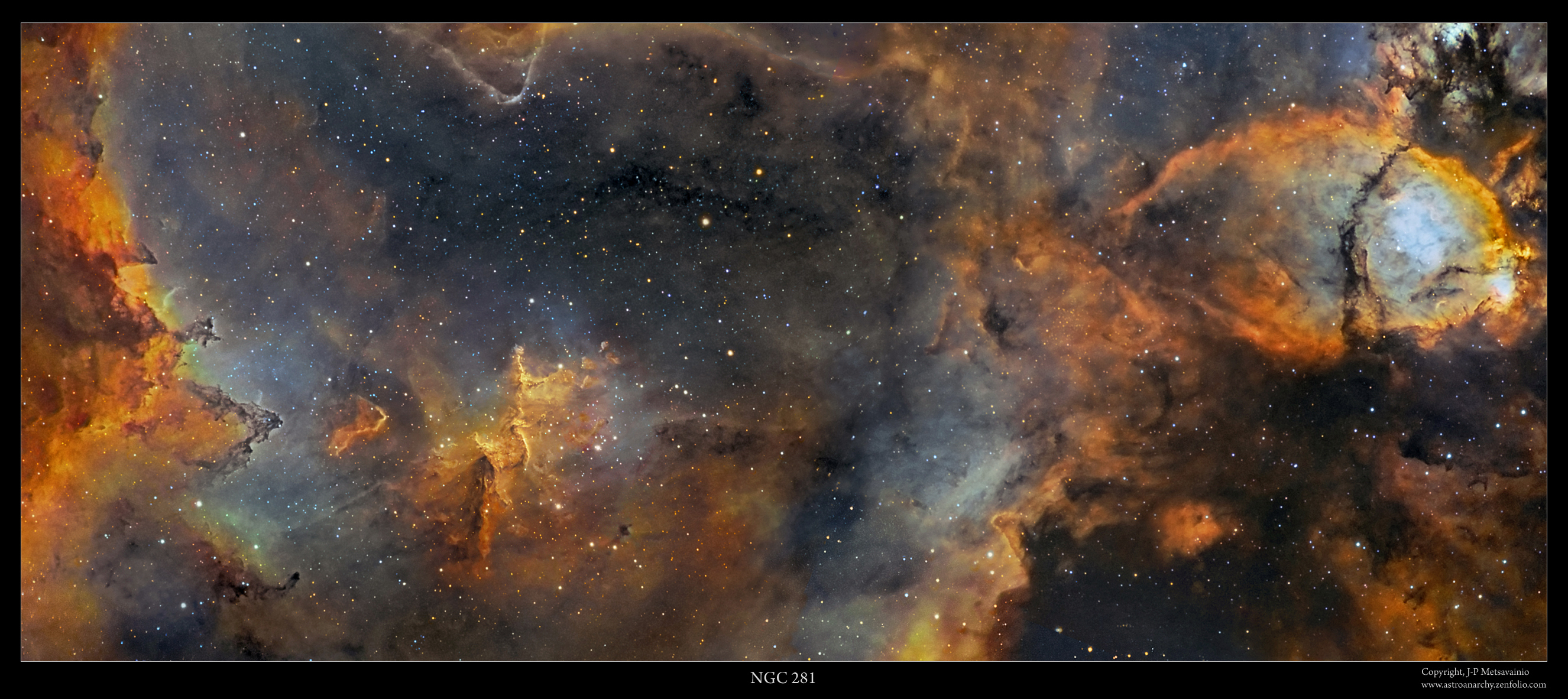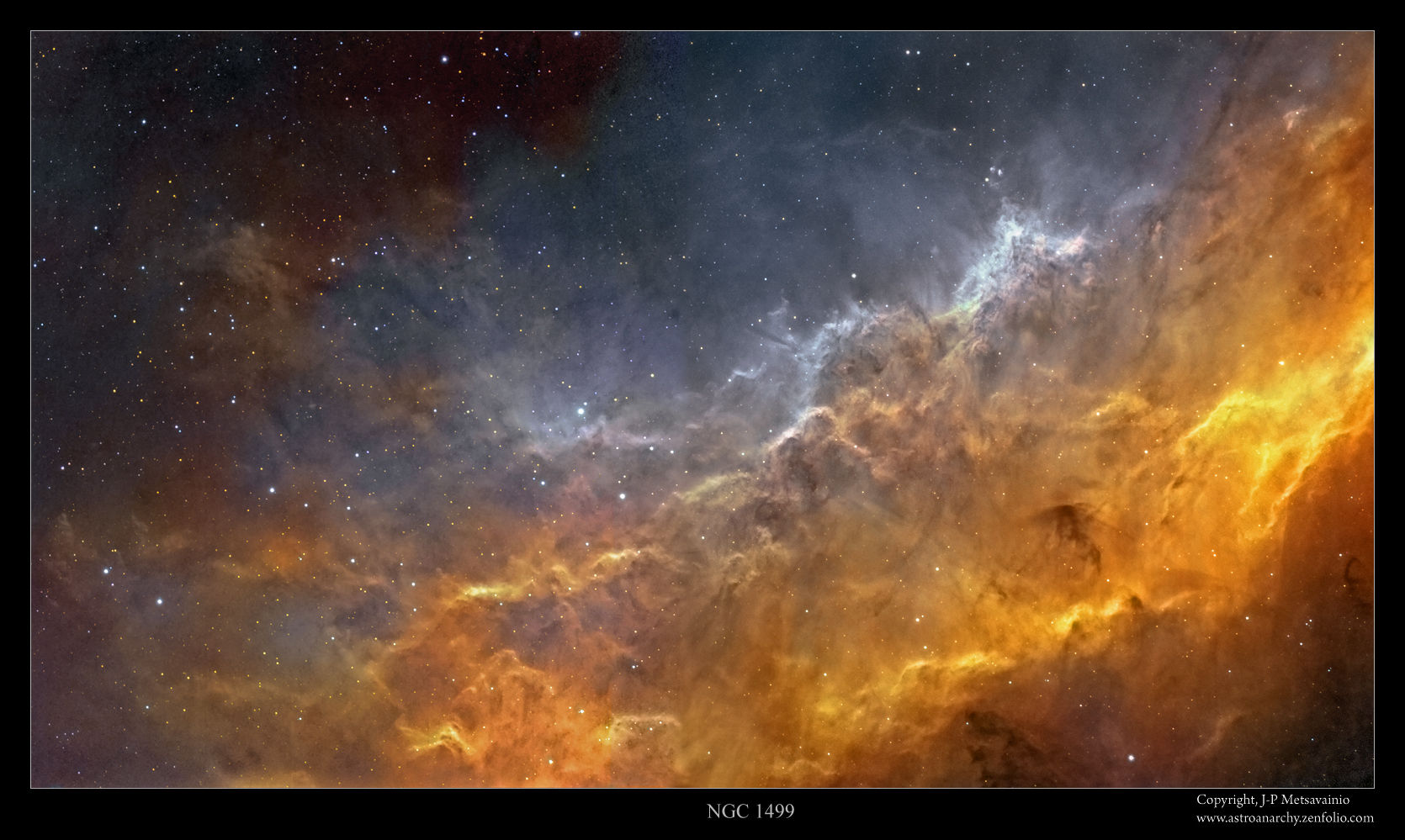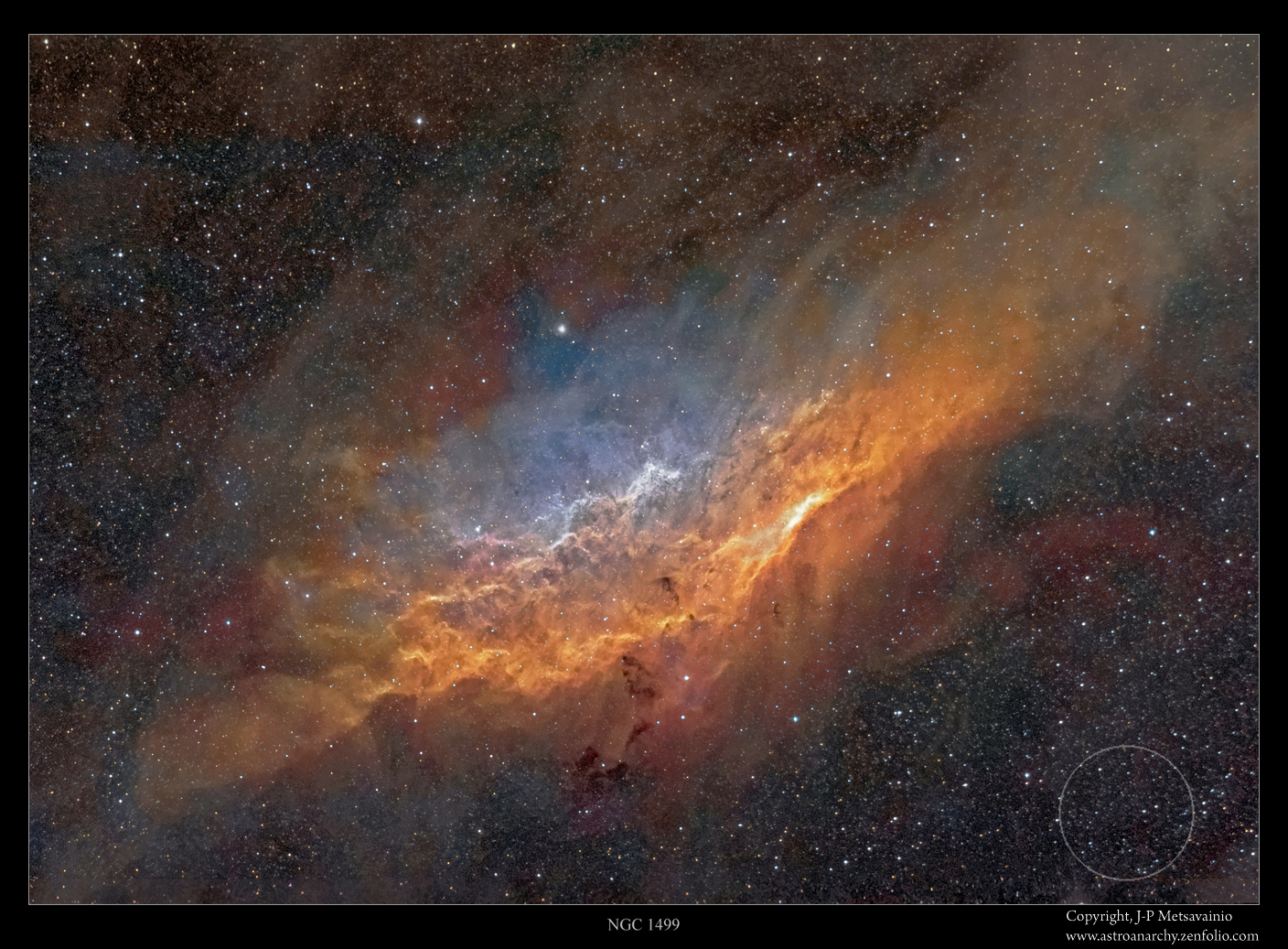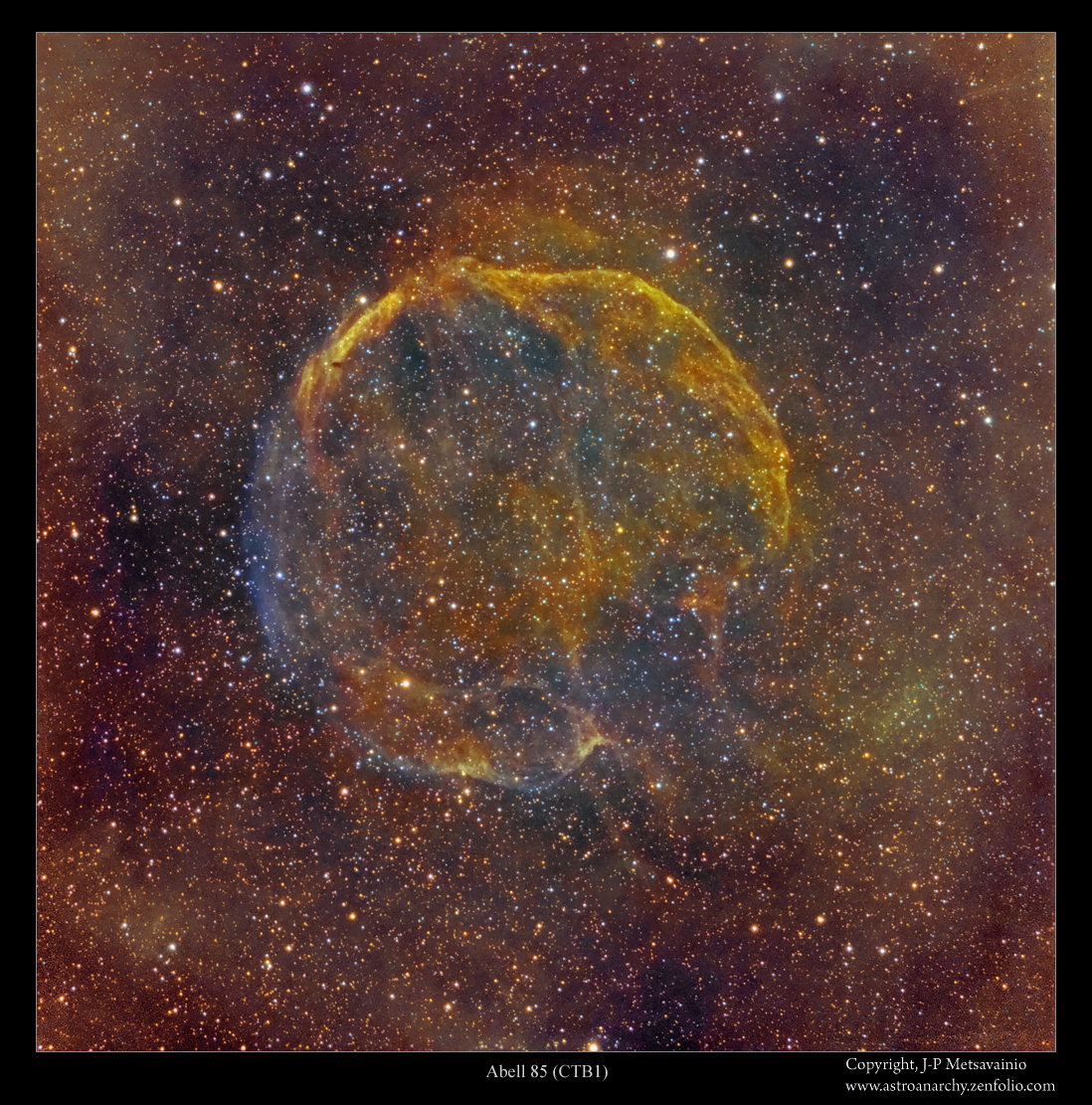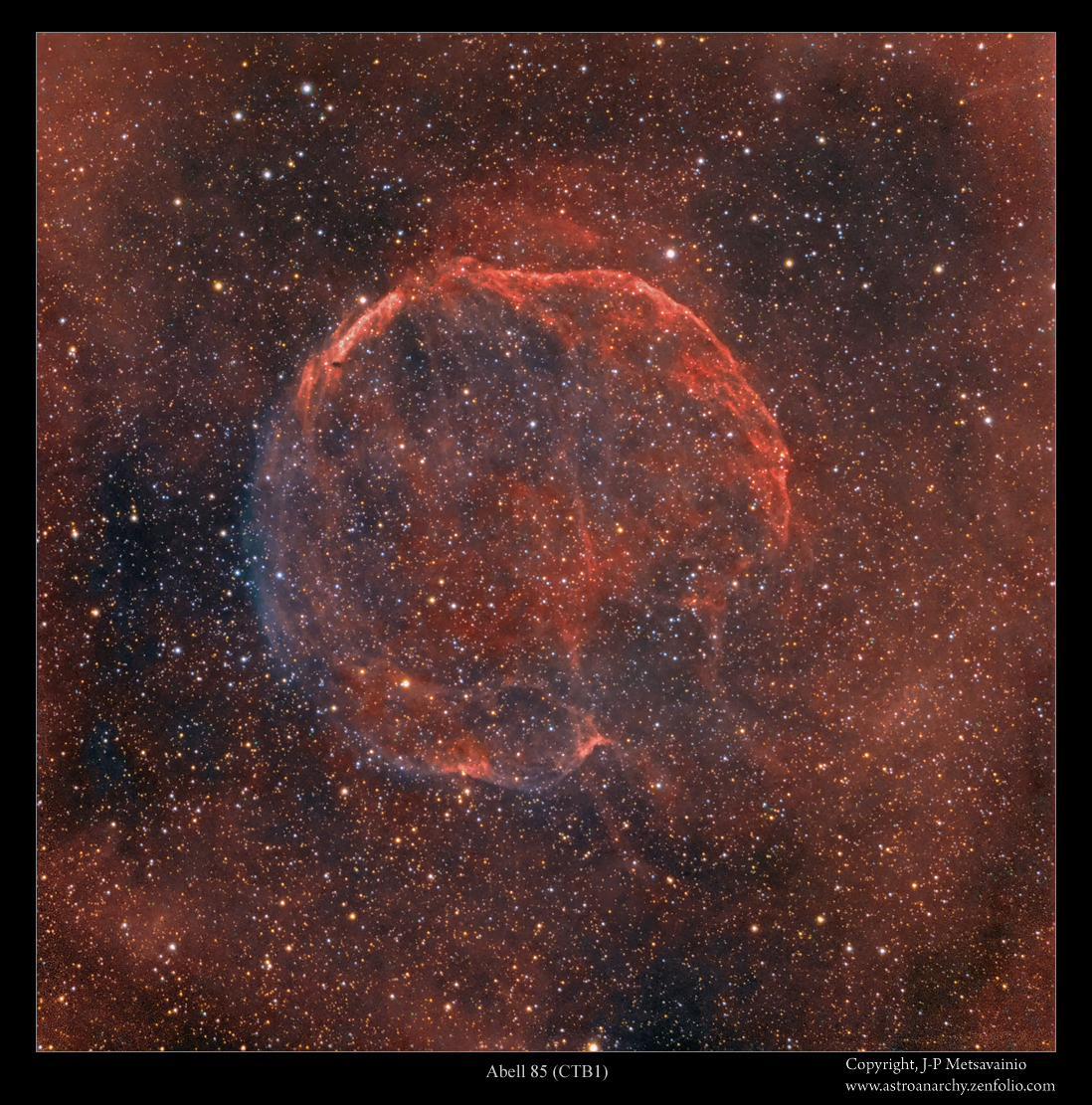COPYRIGHT, PLEASE NOTE
All the material on this website is copyrighted to J-P Metsavainio, if not otherwise stated. Any content on this website may not be reproduced without the author’s permission.
Have a visit in my portfolio
PORTFOLIO:https://astroanarchy.zenfolio.com/
Friday, February 26, 2016
Bubble Nebula as a cinemascope format photo
I have worked with a cinemascope format movie from my photos for a movie theater presentation. This is an extra wide ~21:9 format used in theaters. The actual film is not ready yet but I have some of my images converted to this ultra wide format. I think they will look great at a large movie screen! I'll publish some of individual panoramic format photos here, images are downscaled for the web.
Bubble Nebula in Cassiopeia
Be sure to click for a full resolution image, ~2600 x 1200 pixels
Image details can be seen HERE
A wide filed photo
Click for a full size photo
The area of the panoramic photo can be seen as a white rectangle. Note the size of the full Moon is marked as a white circle at lower right corner for a scale. The Moon has an angular dimension of 30 arc minutes, that's about 0,5 degrees of sky. Image details can be seen HERE
Previously published sets of cinemascope format astro images
http://www.astroanarchy.blogspot.fi/2016/02/cirrus-of-cygnus-as-cinemascope-format.html
http://www.astroanarchy.blogspot.fi/2016/02/filaments-of-cygnus-in-cinemascope.html
http://www.astroanarchy.blogspot.fi/2016/02/a-dramatic-panorama-of-ic-1805-heart.html
http://www.astroanarchy.blogspot.fi/2016/02/two-high-resolution-cinemascope-format.html
http://www.astroanarchy.blogspot.fi/2016/02/more-high-resolution-cinemascope-format.html
http://www.astroanarchy.blogspot.fi/2016/02/high-resolution-cinemascope-format.html
http://www.astroanarchy.blogspot.fi/2016/02/cinemascope-format-panoramas-from-my.html
http://www.astroanarchy.blogspot.fi/2016/02/i-have-worked-with-cinemascope-format.html

Labels:
Narrowband color images,
nebula
Wednesday, February 24, 2016
Cirrus of Cygnus as a cinemascope format photo
I have worked with a cinemascope format movie from my photos for a movie theater presentation. This is an extra wide ~21:9 format used in theaters. The actual film is not ready yet but I have some of my images converted to this ultra wide format. I think they will look great at a large movie screen! I'll publish some of individual panoramic format photos here, images are downscaled for the web.
Cirrus of Cygnus
Be sure to click for a full resolution image, ~2600 x 1200 pixels
Orientation in Cygnus
Please, be sure to click for a full resolution image, ~2300 x 1500 pixels, ~4MB
Note, a size of the full Moon is marked as scale in the lower right corner.
The Moon has an apparent diameter ~30 arc minutes, that's about 0,5 degrees of sky.
Previously published sets of cinemascope format astro images
http://www.astroanarchy.blogspot.fi/2016/02/filaments-of-cygnus-in-cinemascope.html
http://www.astroanarchy.blogspot.fi/2016/02/a-dramatic-panorama-of-ic-1805-heart.html
http://www.astroanarchy.blogspot.fi/2016/02/two-high-resolution-cinemascope-format.html
http://www.astroanarchy.blogspot.fi/2016/02/more-high-resolution-cinemascope-format.html
http://www.astroanarchy.blogspot.fi/2016/02/high-resolution-cinemascope-format.html
http://www.astroanarchy.blogspot.fi/2016/02/cinemascope-format-panoramas-from-my.html
http://www.astroanarchy.blogspot.fi/2016/02/i-have-worked-with-cinemascope-format.html
Labels:
Narrowband color images,
nebula
Tuesday, February 23, 2016
Filaments of Cygnus in cinemascope format
I have worked with a cinemascope format movie for a movie theatre presentation from my photos. This is an extra wide ~21:9 format used in theaters. The actual film is not ready yet but I have some of my images converted to this ultra wide format. I think they will look great at a large movie screen! I'll publish some of individual panoramic format photos here, images are downscaled for the web.
Filaments of Cygnus x 3
Please, be sure to click for a full resolution images, ~2600 x 1200 pixels
Image details can be seen HERE
Image details can be seen HERE
Image details can be seen HERE
Orientation in Cygnus
Please, be sure to click for a full resolution images, ~2600 x 1700 pixels, 6.7MB
Three panoramic images above are marked in this wide field image of constellation Cygnus as a white rectangles. Image details can be seen HERE
Previously published sets of cinemascope format astro images
Labels:
Narrowband color images,
nebula
Monday, February 22, 2016
A dramatic panorama of IC 1805, the Heart Nebula
I have worked with a cinemascope format movie for a movie theatre presentation from my photos. This is an extra wide ~21:9 format used in theaters. The actual film is not ready yet but I have some of my images converted to this ultra wide format. I think they will look great at a large movie screen! I'll publish some of individual panoramic format photos here, images are downscaled for the web.
A dramatic view to IC 1805
Please, be sure to click for a full resolution images, ~2600 x 1200 pixels
Image details can be seen HERE
Published sets of cinemascope format astro images
Labels:
Narrowband color images,
nebula
Saturday, February 20, 2016
Two high resolution, cinemascope format, panoramas from my astro photos
I have worked with a cinemascope format movie for a movie theatre presentation from my photos. This is an extra wide ~21:9 format used in theaters. The actual film is not ready yet but I have some of my images converted to this ultra wide format. I think they will look great at a large movie screen! I'll publish some of individual panoramic format photos here, images are downscaled for the web.
Half a Moon with a 3D twist
Please, be sure to click for a full resolution images, ~2600 x 1200 pixels

Image details can be seen HERE
Lagoon Nebula
Please, be sure to click for a full resolution images, ~2600 x 1200 pixels

Image details can be seen HERE
Published sets of cinemascope format astro images
http://www.astroanarchy.blogspot.fi/2016/02/more-high-resolution-cinemascope-format.html
http://www.astroanarchy.blogspot.fi/2016/02/high-resolution-cinemascope-format.html
http://www.astroanarchy.blogspot.fi/2016/02/cinemascope-format-panoramas-from-my.html
http://www.astroanarchy.blogspot.fi/2016/02/i-have-worked-with-cinemascope-format.html
Labels:
moon images,
Narrowband color images,
nebula
Friday, February 19, 2016
More high resolution, cinemascope format, panoramas from my astro photos
I have worked with a cinemascope format movie for a movie theatre presentation from my photos. This is an extra wide ~21:9 format used in theaters. The actual film is not ready yet but I have some of my images converted to this ultra wide format. I think they will look great at a large movie screen! I'll publish some of individual panoramic format photos here, images are downscaled for the web.
A large ten panels mosaic of Cepheus
Please, be sure to click for a full resolution images, ~2600 x 1200 pixels
Image details can be seen HERE
Image details can be seen HERE
A large eighteen panels mosaic of Cygnus
Please, be sure to click for a full resolution images, ~2600 x 1200 pixels
Image details can be seen HERE
Labels:
Narrowband color images,
nebula
Thursday, February 18, 2016
High resolution, cinemascope format, panoramas from my astro photos
I have worked with a cinemascope format movie for a movie theatre presentation from my photos. This is an extra wide ~21:9 format used in theaters. The actual film is not ready yet but I have some of my images converted to this ultra wide format. I think they will look great at a large movie screen! I'll publish some of individual panoramic format photos here, images are downscaled for the web.
Veil Nebula supernova remnant details
Please, be sure to click for a full resolution images, ~2600 x 1200 pixels
Eastern Veil, a closeup
Image details can be seen HERE
Western Veil, Pickering's Triangle, a closeup
Image details can be seen HERE
The Veil Nebula supernova remnant
Click for a large photo
The whole Veil, areas in panoramic images are marked with a white rectangles.
Labels:
Narrowband color images,
nebula
Wednesday, February 17, 2016
Cinemascope format panoramas from my astro photos
I have worked with a cinemascope format movie for a movie theatre presentations from my photos. This is an extra wide ~21:9 format used in theaters. The actual film is not ready yet but I have some of my images converted to this ultra wide format. I think they will look great at a large movie screen! I'll publish some of panoramic format photos here, images are downscaled for the web.
Flying Dragon nebula, Sh2-114
Please, be sure to click for a full resolution, ~2600 x 1200 pixels
Half a Moon
Please, be sure to click for a full resolution, ~2600 x 1200 pixels
Image details can be seen HERE
Labels:
moon images,
Narrowband color images
Tuesday, February 16, 2016
Cinemascope format panoramas from my astro photos
I'm publishing some experimental material since the weather up here has been cloudy for months.
I have working with a cinemascope format movie for a movie theatre from my photos. This is an extra wide ~21:9 format used in movie theaters. The actual film is not ready yet but I have some of my images converted to this ultra wide format. I think they will look great at a large movie screen! I'll publish some of panoramic format photos here, images are downscaled for the web.
NGC 281
Please, be sure to click for a full resolution, ~2600 x 1200 pixels
Ngc 281, the Pac-Man Nebula. Image details can be seen HERE
Nebulae of the constellation Auriga
Please, be sure to click for a full resolution, ~2600 x 1200 pixels
A large 12-panel mosaic of the constellation Auriga. Image details can be seen HERE
Labels:
Narrowband color images,
nebula
Friday, February 12, 2016
NGC 1499, the California Nebula, project continues
It has been very cloudy up here for about several months now. At January 4. I was able to shoot some lights for the NGC 1499, the California Nebula. We had few hours of clear sky at February 1. I shot three hours of H-alpha light next to previous image to build a two frame mosaic. Colors are partly from an older wide field photo of the california Nebula.
Detail of the NGC 1499 as a two frame mosaic
Please, click for a large image
An older wide field photo of the NGC 1499
Please, click for a large image
A wide field image of the NGC 1499 from January 2012 was shot with a Tokina AT-X 200mm f2.8 lens, QHY9 astrocamera and Baader narrowband filter set. The white circle at lower right corner shows an apparent size of the full Moon at the same scale. (Moon has an apparent diameter of 0.5 degrees = 30 arc minutes.) This is a large target with a lowish surface brightness, total exposure time is around 30h.
INFO
The California Nebula is an emission area located in constellation Perseus. It appears to resemble outlines of State of California on long exposure photographs, like this one. It has a very low surface brightness and it's very difficult to observe visually. Distance from my hometown Oulu, Finland, is about 1000 light years.
this image spans around five degrees horizontally. The Wikipedia article states, that the angular size is about 2,5 degrees (Five full Moons side by side) but as can be seen in this image, the actual size, with a dim outer parts, is much large.
Detail of the NGC 1499Please, click for a large image
The left side of the two frame mosaic at top of the page was shot at At January 4. 2016.
Technical details
Processing work flow
Image acquisition, MaxiDL v5.07.
Stacked and calibrated in CCDStack2.
Deconvolution with a CCDStack2 Positive Constraint, 21 iterations, added at 25% weight
Color combine in PS CS3
Levels and curves in PS CS3.
Imaging optics
Celestron Edge HD 1100 @ f7 with 0,7 focal reducer for Edge HD 1100 telescope
Mount
10-micron 1000
Cameras and filters
Imaging camera Apogee Alta U16 and Apogee seven slot filter wheel
Guider camera, Lodestar x2 and SXV-AOL
Astrodon filter, 5nm H-alpha
Astrodon filter, 3nm O-III
Astrodon filter, 3nm S-II
Exposure times
H-alpha, 24 x 1200s =8h
O-III, 3 x 1200s binned = 1h
S-II, 3 x 1200s binned = 1h
Total 10h
Part of the S-II and O-III signals are borrowed from the older wide field photo.
Labels:
Narrowband color images,
nebula
Tuesday, January 26, 2016
Filaments of Cygnus in visual spectrum
This is a visual color version of my first picture for the year 2016. I published the Mapped Color version at January 7. This is a two frame mosaic project of the central Cygnus. It was shot at freezing temperature of - 27 degrees centigrade (-17 fahrenheit). Exposures are from three nights between 3. - 6. january 2016. Total exposure time 15h.
Filaments of Cygnus
click for a full size image
Natural color composition from the emission of ionized elements, R=80%Hydrogen+20%Sulfur, G=100%Oxygen and B=85%Oxygen+15%Hydrogen to compensate otherwise missing H-beta emission. This composition is very close to a visual spectrum.
Orientation in Cygnus
Area of interest is marked as a white regtangle in this older wide field image of the area.
More info about this photo can be found HERE.
Technical details
Processing work flow
Image acquisition, MaxiDL v5.07.
Stacked and calibrated in CCDStack2.
Deconvolution with a CCDStack2 Positive Constraint, 21 iterations, added at 25% weight
Color combine in PS CS3
Levels and curves in PS CS3.
Imaging optics
Celestron Edge HD 1100 @ f7 with 0,7 focal reducer for Edge HD 1100 telescope
Mount
10-micron 1000
Cameras and filters
Imaging camera Apogee Alta U16 and Apogee seven slot filter wheel
Guider camera, Lodestar x2 and SXV-AOL
Labels:
Narrowband color images,
nebula
Wednesday, January 13, 2016
Astro Anarchy gets published
My astrophotos are selected as a public content to a pedestrian zone in my hometown Oulu, Finland.
There is a very large display unit at the main square, 5.12 x 3.2 meters (over 16 x 10 feet).
Six different sets of my astronomical photographs and animations are running there as a slideshow during the January 2016. The show will run at every 15-25 minutes and last about three minutes at the time.
Six different sets of my astronomical photographs and animations are running there as a slideshow during the January 2016. The show will run at every 15-25 minutes and last about three minutes at the time.
The public slideshow in Oulu, Finland
January 2016
My shot of the Bubble nebula at 5.12 x 3.2 meters LED-screen (over 16 x 10 feet)
All my astronomical photographs can be found from my PORTFOLIO.
Labels:
publications
Monday, January 11, 2016
Abell 85 (CTB1), a dim Galactic Supernova Remnant in Cassiopeia, project finalized
I started this imaging project at January 2015. This January 2016 I was able to shoot more exposures for this dim target to finalized my imaging project. It's always a pleasure to have the image ready after a long period of time. As usually, I compared my exposures from different years to see has anything happened up there during the year. Usually there are no difference other than seeing conditions but this time I spotted a suspected variable star in the image field. (NSV 26187) There is an animated image in this post to show the difference between the years 2015 and 2016.
Abell 85 (CTB1)
SNR G116.9+00.1 in constellation Cassiopeia, click for a large image.
Image spans about one degree of sky. The photo is in mapped colors from the light
emitted by an ionized elements, red=sulfur, green=hydrogen and blue=oxygen.
Abell 85 in visual colors
Please, click for a large image
Natural color composition from the emission of ionized elements, R=80%Hydrogen+20%Sulfur, G=100%Oxygen and B=85%Oxygen+15%Hydrogen to compensate otherwise missing H-beta emission. This composition is very close to a visual spectrum.
Abell 85 is a very faint supernova remnant in constellation Cassiopeia. It's difficult to image with any details due to extremely low surface brightness. Abell 85 has a largish diameter, about half a degree, it has a same apparent diameter as a full Moon. The physical diameter is about 98 light years across. This SNR locates about 9800 light years from the Earth. CTB1 was originally thought to be a planetary nebula and it was included the Abell catalog of planetary nebulae under a name Abell 85. It was confirmed to be a supernova remnant by Willis & Dickel at 1971.
Suspected variable star
An animated image showing a suspected variable star, NSV 26187, brightness variation between the years 2015 and 2016.
Technical details
Processing work flow
Image acquisition, MaxiDL v5.07.
Stacked and calibrated in CCDStack2.
Deconvolution with a CCDStack2 Positive Constraint, 21 iterations, added at 25% weight
Color combine in PS CS3
Levels and curves in PS CS3.
Imaging optics
Celestron Edge HD 1100 @ f7 with 0,7 focal reducer for Edge HD 1100 telescope
Mount
10-micron 1000
Cameras and filters
Imaging camera Apogee Alta U16 and Apogee seven slot filter wheel
Guider camera, Lodestar x2 and SXV-AOL
Astrodon filter, 5nm H-alpha
Astrodon filter, 3nm O-III
Astrodon filter, 3nm S-II
Exposure times
H-alpha, 21 x 1200s =7h
O-III, 9 x 1200s binned = 3h
S-II, 6 x 1200s binned = 2h
Total 12h
This really is a dim target...
Labels:
Narrowband color images,
nebula
Saturday, January 9, 2016
NGC 1499, the California Nebula
At the night of January 4. I was shooting exposures for the Filaments of Cygnus image. After few hours the constellation Cygnus was getting too low in the horizon and I had to select a new target for rest of the night, the NGC 1499.
Detail of the NGC 1499
Please, click for a large image
Image area spans about one degree of sky. The photo is in mapped colors from the light
emitted by an ionized elements, red=sulfur, green=hydrogen and blue=oxygen.
Please, click for a large image
A wide field image of the NGC 1499 from January 2012 was shot with a Tokina AT-X 200mm f2.8 lens, QHY9 astrocamera and Baader narrowband filter set. The white circle at lower right corner shows an apparent size of the full Moon at the same scale. (Moon has an apparent diameter of 0.5 degrees = 30 arc minutes.) This is a large target with a lowish surface brightness, total exposure time is around 30h.
INFO
The California Nebula is an emission area located in constellation Perseus. It appears to resemble outlines of State of California on long exposure photographs, like this one. It has a very low surface brightness and it's very difficult to observe visually. Distance from my hometown Oulu, Finland, is about 1000 light years.
this image spans around five degrees horizontally. The Wikipedia article states, that the angular size is about 2,5 degrees (Five full Moons side by side) but as can be seen in this image, the actual size, with a dim outer parts, is much large.
Detail of NGC 1499 at visual colors
Natural color composition from the emission of ionized elements, R=80%Hydrogen+20%Sulfur, G=100%Oxygen and B=85%Oxygen+15%Hydrogen to compensate otherwise missing H-beta emission. This composition is very close to a visual spectrum.
Technical details
Processing work flow
Image acquisition, MaxiDL v5.07.
Stacked and calibrated in CCDStack2.
Deconvolution with a CCDStack2 Positive Constraint, 21 iterations, added at 25% weight
Color combine in PS CS3
Levels and curves in PS CS3.
Imaging optics
Celestron Edge HD 1100 @ f7 with 0,7 focal reducer for Edge HD 1100 telescope
Mount
10-micron 1000
Cameras and filters
Imaging camera Apogee Alta U16 and Apogee seven slot filter wheel
Guider camera, Lodestar x2 and SXV-AOL
Astrodon filter, 5nm H-alpha
Astrodon filter, 3nm O-III
Astrodon filter, 3nm S-II
Exposure times
H-alpha, 15 x 1200s =5h
O-III, 3 x 1200s binned = 1h
S-II, 3 x 1200s binned = 1h
Total 7h
Some S-II and O-III signal is borrowed from the older wide field photo.
Labels:
Narrowband color images,
nebula
Thursday, January 7, 2016
My first photo for the year 2016, Filaments of Cygnus
We have had few clear nights in this year. I was able to finalice a two frame mosaic project of the central Cygnus at freezing temperature of - 27 degrees centigrade (-17 fahrenheit) Lights are from three nights between 3. - 6. january 2016. Total exposure time 15h.
Opening image for the year 2016, Filaments of Cygnus
Please, click for a large image, 1800x900 pixels and 1.7 MBA two frame mosaic of the central Cygnus area spans about two degrees of sky. Image is in mapped colors from the light emitted by an ionized elements, red=sulfur, green=hydrogen and blue=oxygen.
Orientation in Cygnus
Area of interest is marked as a white regtangle in this older wide field image of the area.
More info about this photo can be found HERE.
Technical details
Processing work flow
Image acquisition, MaxiDL v5.07.
Stacked and calibrated in CCDStack2.
Deconvolution with a CCDStack2 Positive Constraint, 21 iterations, added at 25% weight
Color combine in PS CS3
Levels and curves in PS CS3.
Imaging optics
Celestron Edge HD 1100 @ f7 with 0,7 focal reducer for Edge HD 1100 telescope
Mount
10-micron 1000
Cameras and filters
Imaging camera Apogee Alta U16 and Apogee seven slot filter wheel
Guider camera, Lodestar x2 and SXV-AOL
Astrodon filter, 5nm H-alpha
Astrodon filter, 3nm O-III
Astrodon filter, 3nm S-II
Exposure times
H-alpha, 27 x 1200s =9h
O-III, 9 x 1200s binned = 3h
Labels:
Narrowband color images,
nebula
Subscribe to:
Posts (Atom)









